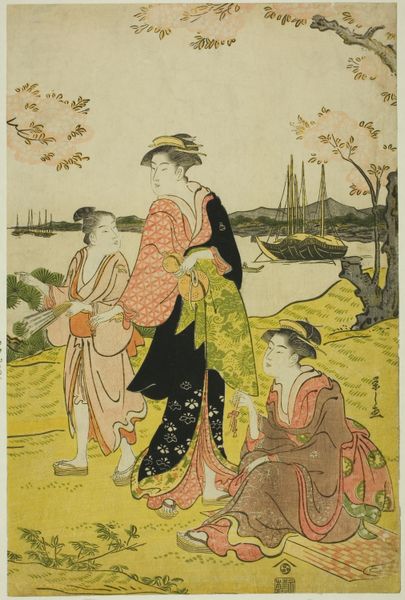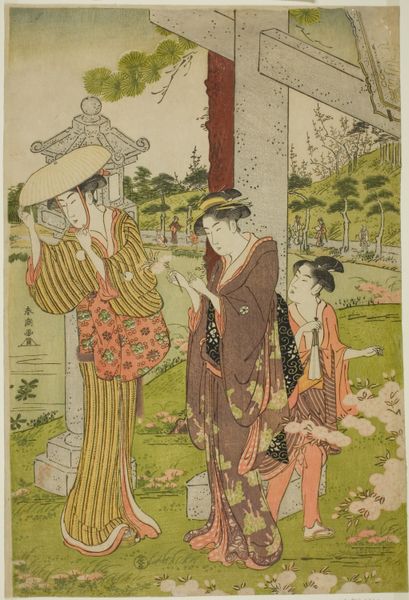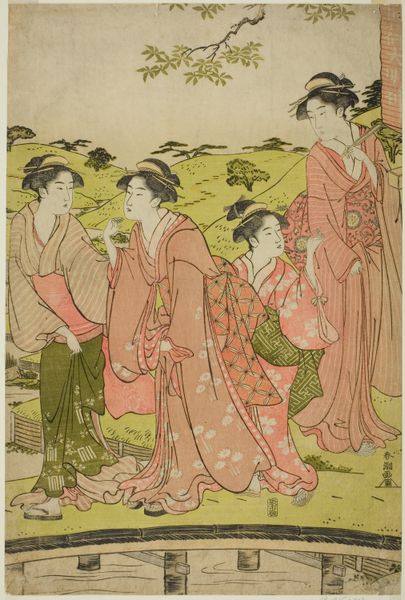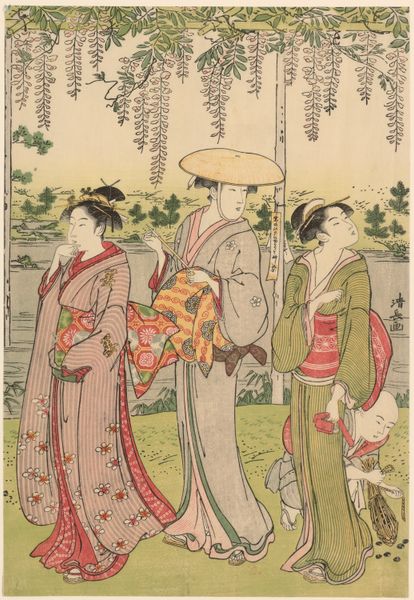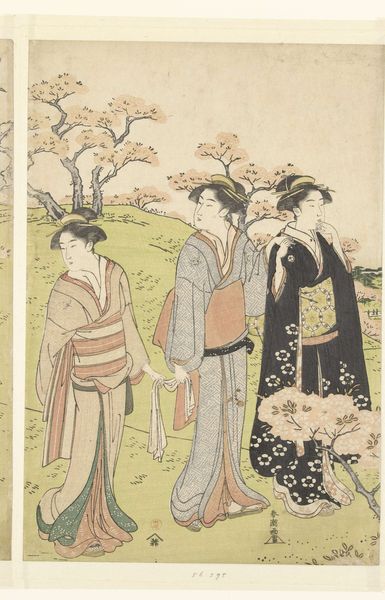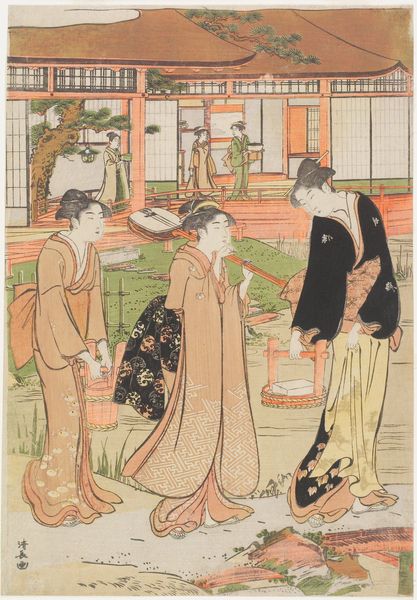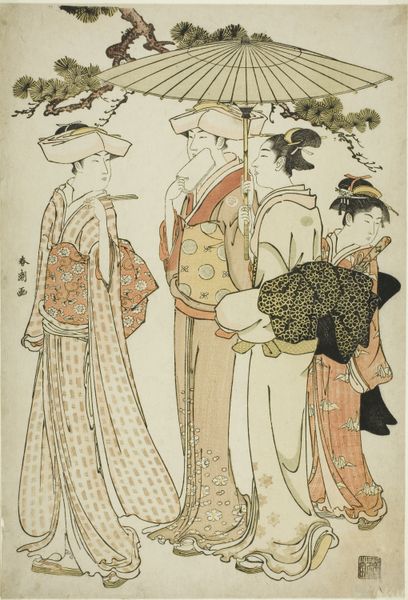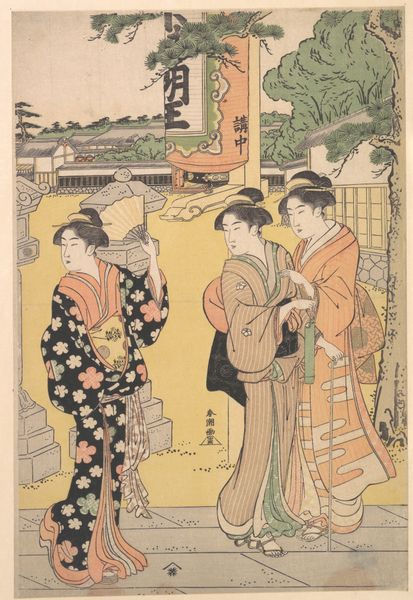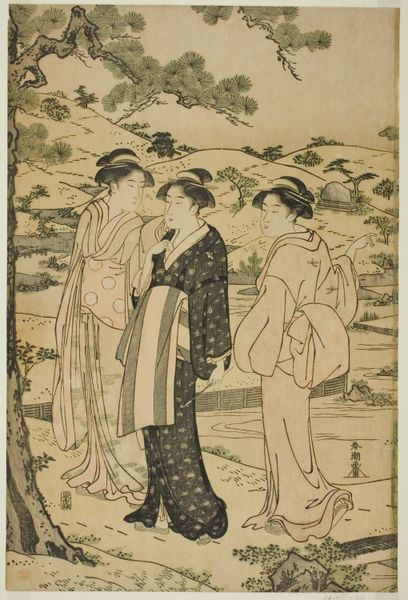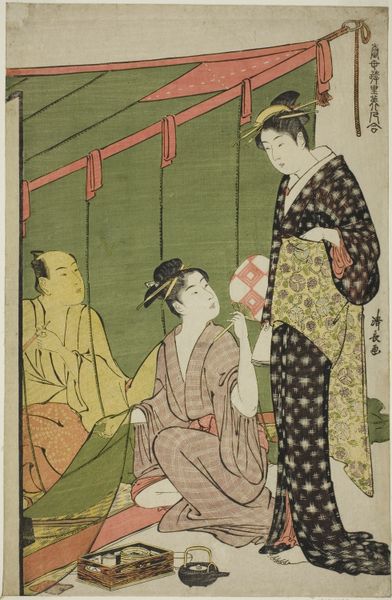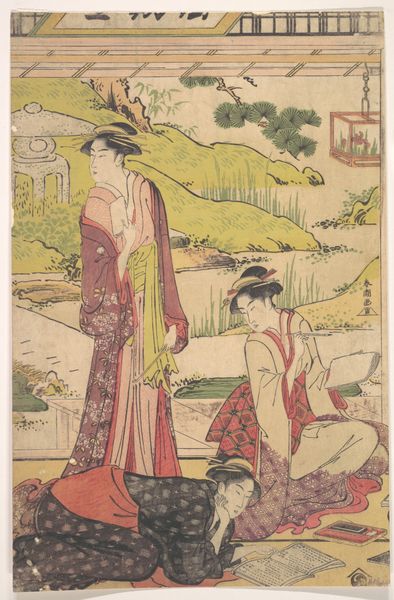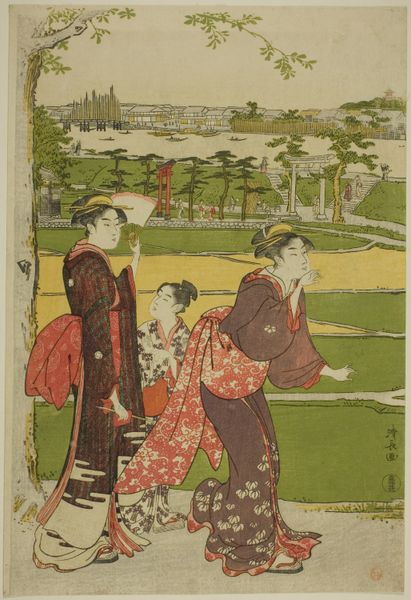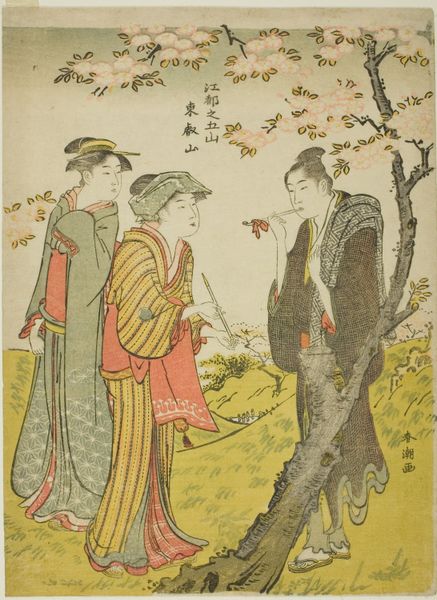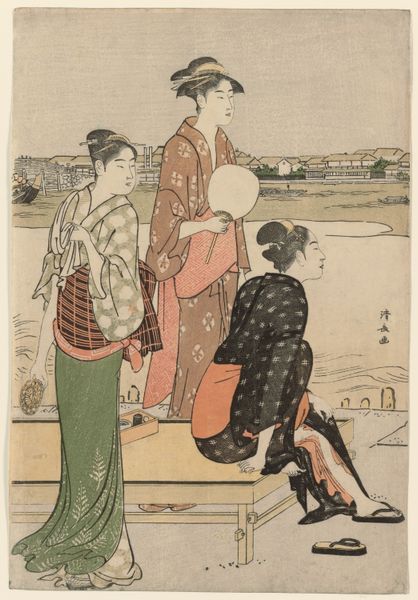
print, woodblock-print
#
portrait
# print
#
asian-art
#
ukiyo-e
#
woodblock-print
#
genre-painting
#
watercolor
Dimensions: 38.6 × 26.2 cm (15 3/16 × 10 5/16 in.)
Copyright: Public Domain
Editor: This woodblock print, "Three Women near Rice Paddies" by Katsukawa Shuncho, circa 1780, strikes me with its tranquility. The figures almost seem to float across the rice paddies. What’s your take on this, especially concerning its place in society at the time? Curator: It's crucial to see this ukiyo-e print within its socio-political context. Genre paintings like these weren't just pretty pictures; they depicted everyday life, reflecting and subtly critiquing the rigid social hierarchies of Edo-period Japan. Notice how these women, though elegantly dressed, are placed in the context of agricultural labor, something typically absent in art depicting upper classes. Editor: That’s fascinating. I hadn't considered the subversion there. So, by depicting women near rice paddies, what narrative is Shunchō perhaps hinting at? Curator: Consider the floating world aspect of ukiyo-e, reflecting the transience of life. These women, possibly courtesans or wealthy merchants' wives, are engaging with nature, an idealized escape perhaps, but one that simultaneously acknowledges their restricted roles in a patriarchal society. Who held economic power and how were social interactions dictated by that power? How is it visualized here? Editor: It’s interesting to think about their positions outside of traditional roles, but perhaps also reinforcing certain expectations. I appreciate how you've brought a deeper understanding to the societal undercurrents of this seemingly serene print. Curator: Absolutely! Seeing beyond the aesthetic surface allows us to engage with the complex power dynamics at play and reveals how art serves as both a mirror and a potential catalyst for social commentary. Editor: This has certainly changed how I view ukiyo-e!
Comments
No comments
Be the first to comment and join the conversation on the ultimate creative platform.
